Results 1 to 10 of 24
-
09-13-2010, 07:43 PM #1aka shooter74743




- Join Date
- Sep 2009
- Location
- SE Oklahoma/NE Texas
- Posts
- 7,285
- Blog Entries
- 4
Thanked: 1936 "The Douglas" Oilstone: Please help to identify
"The Douglas" Oilstone: Please help to identify
Has anyone heard of this one?
I was cleaning it up and noticed that it was deep into the wood, so I worked on getting it out. Stone is 9 1/4 long x 1 5/8 wide x1 5/8 thick. Stone seems to be a very fine stone & maybe a finisher. It is definitely a natural. What have I got here?
It came from the United Kingdom if that helps...
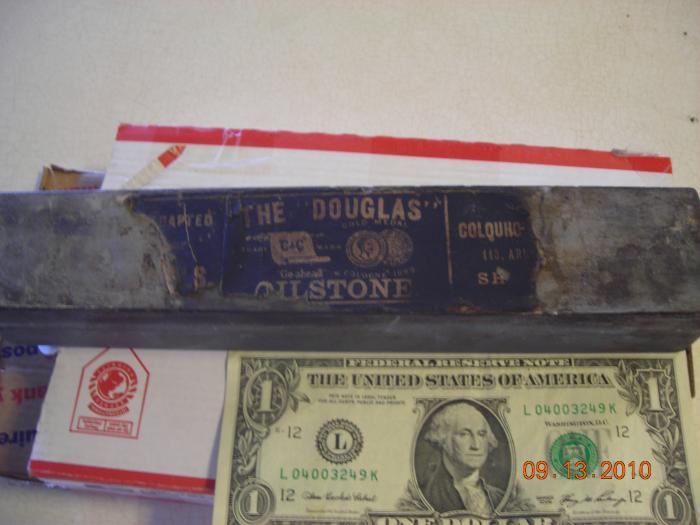
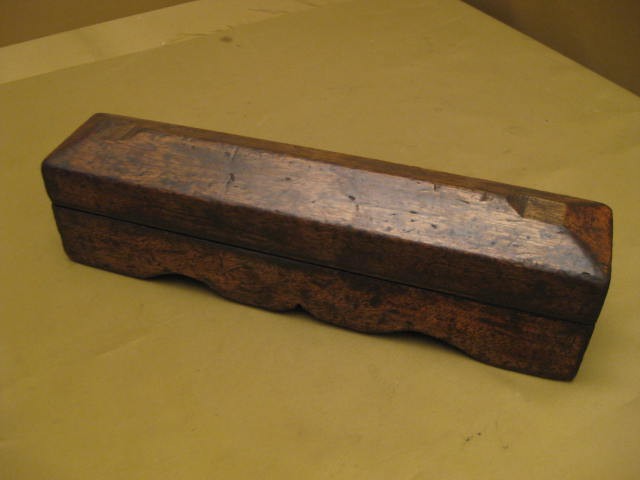
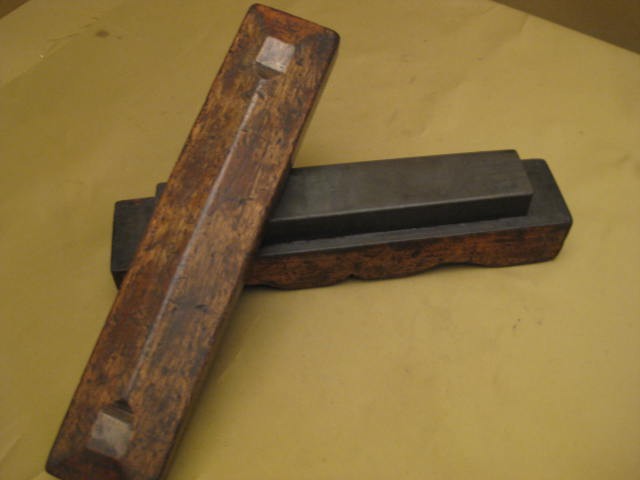
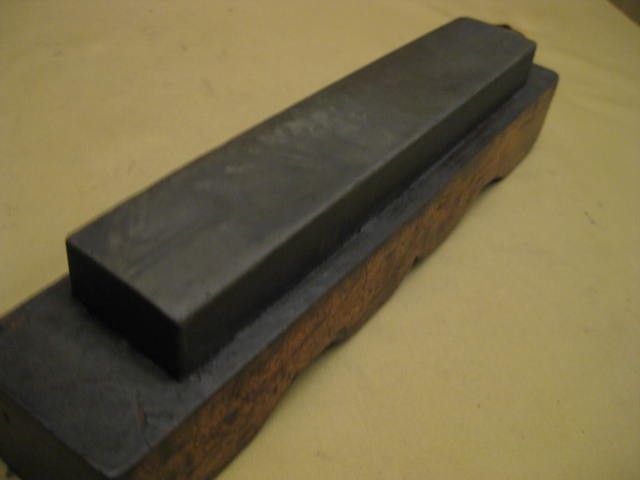
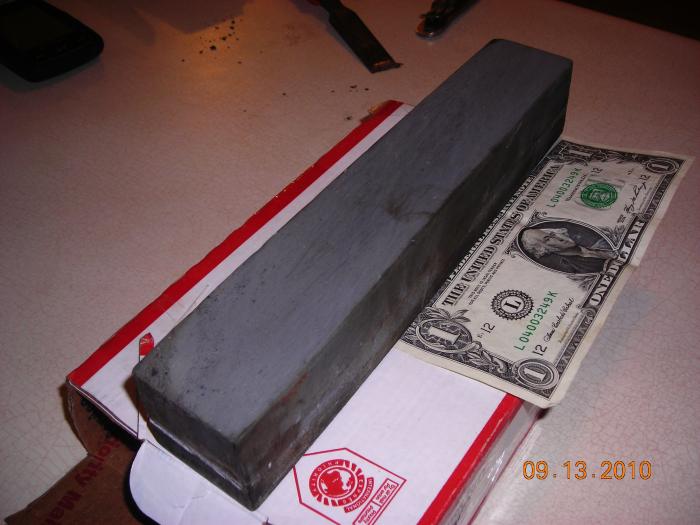
Thank you in advance!Southeastern Oklahoma/Northeastern Texas helper. Please don't hesitate to contact me.
Thank you and God Bless, Scott
-
09-13-2010, 07:58 PM #2

There's a hint of Charnley in there. Is that red streaking or am I just hoping? You'd better send it home for further evaluation!
-
The Following User Says Thank You to ben.mid For This Useful Post:
ScottGoodman (09-13-2010)
-
09-13-2010, 08:09 PM #3

I hate to state the obvious, but what you have is a Douglas Oilstone!
Seriously, that does look like an interesting hone. Perhaps it is a 'brand' of Charnley, although I never knew they were quarried and branded like Eschers...perhaps they were - it does resemble some Charnleys that I have seen.
Or maybe it is a Cutler's Green? They are so elusive **as is the Devonshire Oilstone** that none of us really knows what either looks like, and likely there are variations amongst them as there are with every other natural.
Please test it thoroughly as best you can and let us know the findings of your analysis. This really interests me and I'd love to know how it performs against your Charnley you recently bought.
Thanks for this post.
-
The Following 2 Users Say Thank You to Scipio For This Useful Post:
ben.mid (09-13-2010), ScottGoodman (09-13-2010)
-
09-13-2010, 08:30 PM #4aka shooter74743




- Join Date
- Sep 2009
- Location
- SE Oklahoma/NE Texas
- Posts
- 7,285
- Blog Entries
- 4
Thanked: 1936
I have a Charnley Forest and I'm just not sure...but then again it's got that same type of greenish-gray slate look. It just doesn't have the pinks or other colors in it like mine has. I've never had my hands on an escher, but it looks similar to the pics that I have seen...just didn't think folks used oil on them.
Picture 4 is before I cleaned it up & it was oil laden/coated. Picture 5 is after I had cleaned on it some and lapped it till I got tired with 220 on the countertop. It's pretty hard and gives off little slurry. I haven't taken a diamond stone to it yet...
I didn't expect to see a label when I got it out of the wood, that sucker was in there very tight and I believe they use old window sill/caulk, like they used when single pane glass was the only glass, to secure it in the box.Southeastern Oklahoma/Northeastern Texas helper. Please don't hesitate to contact me.
Thank you and God Bless, Scott
-
09-13-2010, 08:36 PM #5

It's not an Escher - Eschers are too soft IMO to be used with oil as it would penetrate too far. And it is not the dimensions of an Escher, even the untypical ones, neither does it look particularly like one IMO either.
It is most likely of UK origin, English, Scotish or Welsh, the latter if it is a variety of slate.
Not all Charnleys have red or pink in them. Some only have the faintest line of it towards one end, and if that one end had been cut differently, it would not even be present. I have a Charnley without any red at all. It is worth lapping it on all sides and looking with a magnifying glass. If you find even the faintest hair thin line of red, it is most definitely a Charnley. If not, it could still be one too.
-
The Following User Says Thank You to Scipio For This Useful Post:
ScottGoodman (09-13-2010)
-
09-13-2010, 09:09 PM #6

From these pictures it's hard to tell if it is a Charnley Forest. Perhaps after it has been lapped to about 325-600 grit we can tell. Sizewise it's possible but it could also be a similar stone.
If you have another Charnley Forest you can compare the smoothness of the surface, translucency, smell and sound it makes when you handle it. I wouldn't lap or sand the sides just to look for a red streak.
Nice catch!
-
The Following User Says Thank You to Piet For This Useful Post:
ScottGoodman (09-13-2010)
-
09-14-2010, 10:12 PM #7Senior Member

- Join Date
- Mar 2009
- Posts
- 1,211
Thanked: 202
I have CFs without red streaks and few weeks back I had one in my hands with simillar shape. What is the size? (Sorry dolar note is not that actual for me in UK).
-
The Following User Says Thank You to adrspach For This Useful Post:
ScottGoodman (09-15-2010)
-
09-15-2010, 01:20 AM #8Senior Member



- Join Date
- Apr 2008
- Location
- Essex, UK
- Posts
- 3,816
Thanked: 3164
"C & C" and "Go-Ahead" were trademarks of Colquhoun & Cadman, based at the Douglas Works in Arundel Street, Sheffield, as listed in a 1901 Trades Directory. The firm dates back to 1892. The two founders were Edward Dewing Colqhoun and Edwin Cadman. The firm was Incorporated in 1907. They were a subsidiary of Joseph Elliot & Sons. By 1929 they had moved to Sylvester Gardens in Sheffield.
They produced cutlery, edged tools, and so on. I have seen other stones like that that used by similar trades that turned out to be tams when cleaned up. Yours certainly looks speckled.
Regards,
NeilLast edited by Neil Miller; 09-15-2010 at 06:58 AM.
-
The Following User Says Thank You to Neil Miller For This Useful Post:
ScottGoodman (09-15-2010)
-
09-15-2010, 07:07 AM #9Hones & Honing




- Join Date
- May 2005
- Location
- Saint Paul, Minnesota, United States
- Posts
- 8,023
- Blog Entries
- 1
Thanked: 2209
Hmmmm...... it does not look like the speckled Tam that I have.... but maybe a Water of Ayr? or......?
Randolph Tuttle, a SRP Mentor for residents of Minnesota & western Wisconsin
-
The Following User Says Thank You to randydance062449 For This Useful Post:
ScottGoodman (09-15-2010)
-
09-15-2010, 09:58 AM #10


 LinkBack URL
LinkBack URL About LinkBacks
About LinkBacks






 Reply With Quote
Reply With Quote
